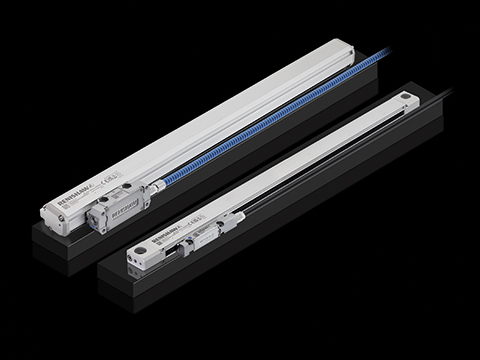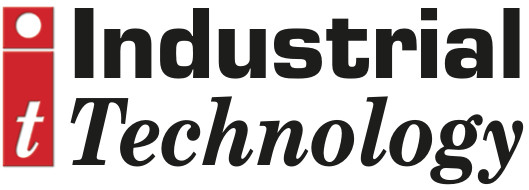
Posted to News on 16th Apr 2025, 17:00
Encoders for position and motion control
The experts at Renishaw look at what an encoder is, the different types of encoders, how they work and where they are used.

Visitors to Machine Building North got a real treat. Not only were they able find solutions to their most pressing machine building challenges; they also had the opportunity to climb on board Concorde and have a look around this impressive piece of aviation history.
Renishaw is proud to have its own association with Concorde through co-founder Sir David McMurtry. A brilliant engineer, Sir David was employed at Rolls-Royce in Bristol for 17 years, where he rose to become Deputy Chief Designer and the company's youngest ever Assistant Chief of Engine Design. He was responsible for 47 patents at Rolls-Royce and went on to be named on over 200 patents for Renishaw innovations.
Sir David invented the 3D touch-trigger probe in 1972 to solve measurement problems faced in the manufacture of the Olympus engines that powered the Concorde supersonic airliner. This innovative product enabled the accurate measurement of machined components and finished assemblies.
Seeing the potential of this product, Sir David, along with John Deer, a fellow Rolls-Royce engineer, founded Renishaw the following year to commercialise the 3D touch-trigger probe for co-ordinate measuring machines (CMMs). Since then, Renishaw's metrology innovations and reputation for engineering excellence have established the company as a leader in its markets.
The first probes developed by Sir David were purely mechanical devices that detected contact with a workpiece to measure its dimensions. Later advances in technology, such as the improvement of probe sensitivity by the use of strain gauges or internal laser paths, built on Sir David's initial design. The performance of CMM probing was further improved by Renishaw's launch of a range of position encoders, starting in 1989.
Renishaw uses its ATOM miniature optical encoders on the yaw and pitch axes of its REVO-2 5-axis measurement system which enables high-speed flexible workpiece measurement, improving machine shop productivity. The transition from mechanical probes to scanning probes on rotating measurement heads such as REVO-2 marked a quantum leap in metrology and a prime example of the innovation at the core of Renishaw's business.
Introduction to encoder systems
Renishaw offers a comprehensive range of non-contact encoders for position and motion control, and these products are found in a wide range of applications and industries. The subject involves a range of technical concepts and terminology, but what exactly is an encoder? An encoder is an electromechanical device that converts information from one format or code into another. A position encoder, such as those made by Renishaw, converts linear or rotary motion into an electrical signal that provides information on position, speed and direction of motion, enabling machines to reliably control their moving axes.
Position encoders can employ a range of different sensing technologies: Renishaw specialises in optical, inductive and laser encoder systems.
Renishaw has more than 30 years of experience in the design, manufacture and technical support of high- performance optical encoders.
An optical encoder consists of two components: the scale and the readhead. Optical encoder scales are marked with parallel dark lines, much like the markings on a conventional ruler. These lines, often called graduations, are 'read' by an optical system inside the readhead to create electrical signals or images for further processing inside a machine control system (controller). The lines are accurately positioned on the scale material to ensure appropriate system measurement performance.
Optical encoder scales can take many forms, such as flexible linear, rigid linear, discs and rings. These different forms enable the measurement and control of different types of motion such as linear, full rotation, partial arc rotation, or a combination of these movements. Optical encoder scales must be stable and robust and are commonly made from materials such as stainless steel or glass.
The encoder readhead contains an optical system and electronics that generate an electrical output signal that describes the position and direction of motion of the readhead relative to the scale. By means of signal processing and digital interpolation optical encoders can resolve movement down to 1 nm.
There are two basic types of optical encoder: open and enclosed. An open optical encoder features a scale and readhead that are separated by a small air gap, known as the rideheight, and configured to measure linear, rotary or partial arc motion. Its non-contact design benefits from zero friction and no mechanical wear or hysteresis.
In enclosed encoder systems, the scale and readhead are mounted in a sealed enclosure which protects the encoder from contamination. For example, enclosed encoders are typically used on machine tools, where high accuracy and resistance to contamination from machining debris and cutting coolants are important. Renishaw's proven absolute position measurement technology is robust and reliable, with the non-contact design enhancing repeatability and reducing wear. Superior sealing provides greater resistance to contamination by fluids and solid debris.
The state-of-the-art for enclosed linear encoders is typified by Renishaw's FORTiS range, designed for the harshest industrial applications such as machine tools. These combine industry-proven position measurement with superior sealing, class leading vibration resistance, easy installation and an advanced diagnostic tool.
Incremental vs absolute position
Encoders can measure linear, rotary and partial arc motion by reporting incremental or absolute position. Incremental encoders can only detect motion relative to their current position or a known reference feature the output position signal increments or decrements (depending on direction) position by one count at a time as the readhead moves relative to the scale. Absolute encoders immediately decode their current position without any motion being required.
A key difference between the behaviours of incremental and absolute encoders is how they respond to a loss of power. If an absolute encoder loses power, the readhead will still be able to correctly report its current position when the power is restored, even if it moved during the power outage. Incremental encoders lose their position information during a power cut and require their datum position to be reacquired when power is restored.
Another key distinction is related to communication: absolute encoders feature two-way serial communication between the controller and readhead, whilst incremental encoders provide one-way communication via analogue or digital signals from readhead to controller. Renishaw offers both incremental and absolute scales in a variety of materials. The readheads provide position signals with low electrical noise and high resistance to vibration, meeting the most demanding user requirements in industries such as precision manufacturing, electronics, machine building, and scientific, research and analysis.
Working closely with customers around the world, Renishaw is committed to creating novel and innovative technologies pushing encoder performance and usability to new levels. In the machine building sector, Renishaw case studies showcase how these encoders enable high-performance motion control for manufacturing applications. For example, Anderson Europe chose FORTiS-N enclosed encoders to build state-of-the-art precision micro-milling machines. These linear encoders provide high accuracy, robustness, sealing against contamination and vibration resistance, so ensuring outstanding performance in micro-milling applications.
Renishaw's enclosed encoders have also recently been used in a new hybrid additive and subtractive machine tool, which can perform both processes without any additional part setup steps, substantially reducing manufacturing time. Renishaw provided the machine design team with extensive specialised technical support in optical encoders, tool setters and machine tool probes.
To help engineers and designers select the most appropriate encoder for their application, Renishaw's website includes an encoder product configurator. This enables you to explore the company's wide range of optical encoder systems and request relevant information.






